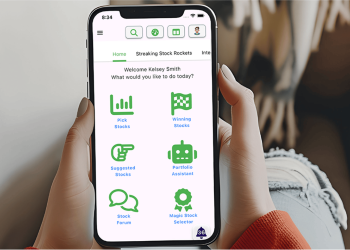Donald Trump campaigned on the promise of carrying out the mass detention and deportation of immigrants.
President Joe Biden spent most of his term widening the government’s ability to incarcerate and deport people; inflating the Immigration and Customs Enforcement budget by millions; increasing the number of beds in prisons; and expanding the use of private prisons, some of which have been plagued with poor living conditions and allegations of sexual assault and abuse. In this past fiscal year, Biden has deported more than 700,000 people — the most within a single year since 2010, which were largely in response to a major increase in people crossing the border during his term.
Trump is inheriting these boosts to the deportation infrastructure as he looks to fulfill his promises of deporting 1 million people each year with 10,000 new Border Patrol agents and help from the military and local law enforcement. He has announced former ICE director and architect of family separation policy Tom Homan as his “border czar”; Stephen Miller, who previously oversaw both family separation and the Muslim travel ban, will return to be deputy chief of staff for policy as well as Trump’s homeland security adviser.
With less than 50 days until his inauguration, immigrant community groups and rights activists are taking his word for it and bracing for the worst. They face drastically different conditions for organizing, depending on their state and local governments, but share some common struggles: lack of funding and public support compared to Trump’s first term in office, and potential burnout from previous fights against deportation.
Less Funding, More Fatigue
In the initial days after Trump’s first election in 2016, people poured into the streets to protest against Trump’s anti-immigrant threats and his promise to build a border wall.
“And that was connected to a lot of attention, both from philanthropy, as well as from elected officials,” said Shiu-Ming Cheer, deputy director of immigrant and racial justice at the California Immigrant Policy Center. “There’s still definitely interest in defending immigrant communities. But I don’t feel like there’s the same sort of renewed resistance that we saw at the end of 2016 — I hope that changes.”
Cheer said that leading up to this year’s election, organizers across California expressed concern that there wouldn’t be enough money to go around to fund organizations that assist immigrants through the turmoil of a second Trump presidency. Most grants from foundations last just one or two years, she said, which doesn’t give immigrant rights groups enough runway to build and plan for the future.
“I generally sense more fatigue this time, and maybe people are just tired or depressed,” Cheer said. Many people who anchored the fight against Trump’s anti-immigrant policies the first time around have since left the movement, taking with them valuable knowledge and experience built during Trump’s first term.
Among those who have remained in the fight is Lorena Quiroz, a Jackson, Mississippi-based organizer who was among the first to offer aid in August 2019 when ICE tore through six different poultry plants across central Mississippi in a massive raid operation, detaining 680 immigrant workers. After the raid, immigrant rights groups in the region received an injection of much-needed philanthropic funding. From that moment, Quiroz founded the nonprofit Immigrant Alliance for Justice and Equity. She noted that this time around, fundraising has been more difficult. She said several funders have reached out to Quiroz since the election, saying that they are thinking about her, but have yet to offer donations.
In recent months, her organization has been preparing the community for similar operations, drawing on practices from the past five years. But she said she’s worried about whether her group, which has a small team of six staff, and others in the region will have the capacity to handle another surge in ICE detainments. And she’s aware she’s not the only organization in need of more resources.
“Every state needs help, some more than others. In Texas, they’ve already attacked nonprofits and worker centers — the whole nation is on fire right now,” Quiroz said. “So knowing that, I feel guilty, like, who do I ask for help?”
Anti-Immigrant Movement
Over the past four years, Texas Gov. Greg Abbott’s Operation Lonestar has detained more than 500,000 immigrants over the past four years. Abbott has also exploited immigrants as political pawns, bussing more than 100,000 people to Democratic-led cities such as New York, D.C., and Chicago to draw attention to an increase of people crossing the U.S.–Mexico border (crossings at the southern border have since fallen, following stricter policies from the Mexican government and Biden administration).
Abbott has also cracked down on nonprofit organizations supporting immigrant communities in Texas. Attorney General Ken Paxton is investigating immigrant aid organizations for allegedly assisting people cross the border illegally in an attempt to close down the aid groups. In August, Paxton sued a longtime Houston-based immigrant rights group, FIEL Houston, for making statements on social media that referred to Trump as “El Hijo Del Diablo,” (son of the Devil) and called Abbott “a violent racist fascist man,” according to the Houston Chronicle. The state’s lawsuit seeks to dissolve the nonprofit.
“We have to be careful in what we do, and how we do it, and how we say it.”
“We have to be careful in what we do, and how we do it, and how we say it, because the governor is using every tool in their power to destroy nonprofit organizations that are supporting the community,” said José Palma, who lives near Houston and is the coordinator of the National Temporary Protected Status Alliance. His group seeks to preserve the TPS program, which currently allows nearly 1.2 million people who have fled armed conflicts or natural disasters to remain in the U.S., and pushes for legislation that would grant TPS holders a path to citizenship.
Both Trump and Vice President-elect Sen. JD Vance have committed to ending the TPS program, which applies to people from 16 countries, including Venezuela, Haiti, El Salvador, Ukraine, Afghanistan, and Honduras. When Trump tried to end TPS during his first term, Palma, who himself is a TPS holder from El Salvador, was a part of organizing around a lawsuit that delayed the administration’s efforts.
Palma says activists are ready to again defend against Trump’s attacks. He has spent the last year preparing organizers and other TPS holders in the event of mass deportations. But this time, Palma has also noticed less funding coming in compared to 2016. In addition, he said he has noticed more members of the immigrant community in Texas expressing fear of the increasingly restrictive policies, which has made people more hesitant to step out and organize.
“The community is a little more afraid to go to the streets and take direct action as I have seen in some other places,” Palma said. He contrasted it with Massachusetts, where he had lived for 25 years before moving to Texas several years ago. Democratic Gov. Maura Healey said she would refuse Trump’s attempts to deputize state police for detaining immigrants and committed to pursuing litigation and executive orders to protect its immigrant communities. Meanwhile, days after the election, officials in Texas offered the oncoming Trump administration a 1,400-acre ranch to build a detention facility where authorities can incarcerate thousands of immigrants as a final stop before deportation.
“The anxiety for sure is bigger — I’ve heard from some of my friends that are afraid even just to come for vacation during the holiday season to Texas because Texas is seen as one of the pioneers of the anti-immigrant movement right now,” Palma added.
Crackdowns Already Happening
In states like Mississippi, which have little to no legal protections for its undocumented immigrant community, such detentions people fear are already happening.
Days before Trump’s reelection, as both presidential candidates were drumming up crackdowns on immigration, Quiroz noticed an increase in local law enforcement arresting undocumented people and handing them over to ICE. Although no agencies in the state have official agreements with ICE under its 287(g) program, police in Mississippi frequently collaborate with the immigration authority.
In one case in late November, a young man who was undocumented was detained by police in Meridian for driving without a license, Quiroz said. Mississippi does not allow undocumented immigrants to apply for a driver’s license. The man was released with a citation to pay a fine. But when he went to a police station to pay the fine, officers arrested the man and kept him in custody under a two-day “ICE hold” before federal authorities would later pick him up.
Adams County Correctional Center in Natchez, a private prison run by CoreCivic and the state’s largest immigration detention center, held around 1,400 people throughout most of 2024. But at the end of October, a week from the election, the private prison’s average daily population shot up by more than 500, bringing to the total to 2,067 incarcerated individuals — the largest population across all immigration detention facilities in the nation, according to the Transactional Records Access Clearinghouse, a Syracuse University database of government enforcement agencies.
While it’s unclear what accounted for the specific jump in the number of people detained at Adams in October, the increase echoed the ICE raids of 2019. On the first day of school that year, ICE tore through six different poultry plants across the state, detaining 680 immigrant workers, many of them young parents. Children returned home from school empty homes. Some toddlers and babies were in daycare, left without anyone to pick them up.
Sending out a press release, Quiroz rallied organizations from across the region into Mississippi. She helped coordinate care for the children as assistance began to pour in from local churches. Then came the challenge of tracking down those arrested by ICE who were scattered at jails and prisons throughout the state. “We had no idea where people were, or where they were taken,” Quiroz recalled.
A network of organizers, community members, and legal workers spent the next several weeks going door to door, figuring out who was taken, where they were incarcerated, and how many family members at home were affected by the arrests. At the end of each day, the groups would report their findings, building a database and support network. Volunteer attorneys hustled to try and secure their release. Many of those detained were eventually deported or faced criminal charges in the U.S., including the use of false identity documents and unlawfully entering the country. Families scrambled to figure out child custody arrangements. For some couples that weren’t married, getting access to financial records proved difficult.
Families, whether separated or remaining together under ICE supervision and the threat of future detainments, are still processing the trauma from the mass raids, Quiroz said.
Who’s Willing to Get Arrested?
State and local governments can still do more to prepare. Los Angeles passed a sanctuary city ordinance earlier this month, which prohibits local law enforcement from collaborating with ICE, but a number of Democratic-led cities and states across the country have yet to put such measures in place.
Biden spent much of his term expanding the immigration and detention apparatus, boosting ICE funding and deporting record numbers of immigrants during the past four years. But he could still protect some immigrants before he leaves office. The TPS Alliance is demanding that Biden renew the TPS program for an additional 18 months before he leaves office. Additionally, the American Civil Liberties Union has called on Biden to use the lame-duck session to halt the expansions of ICE facilities and to close private prisons with known histories of abuse and neglect.
Regardless of what may come, immigrant rights groups are preparing their communities for Trump’s new policies.
Palma, like Quiroz, helped start his community organization to defend against the attacks on immigrants of Trump’s first term in office.
Trump initially attempted to end TPS in 2017: Palma worried that he and his wife, who is also a TPS holder like Palma, would have to leave the U.S. with their young children, or that he would lose his driver’s license and be unable to drive his kids to soccer practice, school, or church. But the fear also drew him closer to fellow TPS holders. He began calling his friends and neighbors to form a committee of TPS holders who would advocate for the program, train other community members of their rights, but also help each other should the program be eliminated and they face potential deportation.
“The idea is to be in a community, to be in a group and to not be alone — sometimes we see people, they are afraid and they just hide themselves. We have to be organized, in case something happens to one of your neighbors or family members, they will know at least where to look for help,” Palma said.
His group is now carrying out multiple trainings each week, and has trained thousands of immigrants and TPS holders since its founding. Since 2017, TPS committees have formed in places like Boston, Los Angeles, Houston, Dallas, D.C., and cities in North Carolina and Virginia.
In Mississippi, Quiroz also has also led training sessions in recent months that have drawn dozens, educating individuals and families on their legal rights, such as refusing to open their door for an ICE officer unless they have a signed order from a judge.
After the 2019 raids, as ICE continued to remain a presence within the community, Quiroz and her organization turned to radical means of resistance. They sought volunteers to serve as block captains, which notify neighbors when ICE is conducting stops or raids at a given street corner, highway, or trailer park. The group also set up a hotline where people can call in the event of an encounter with an ICE agent. A network of allies, usually people with legal status, will show up and remind individuals of their rights.
In one instance, ICE followed a woman, a single mom with a teenage daughter, while driving home. Still inside her car, the woman called the hotline and an ally was able to show up, Quiroz recalled. The ally spoke to the ICE agent and learned the agent didn’t have a warrant to arrest her. The ally then urged the woman to stay inside her car. They waited until the agent eventually left.
However, ICE was able to detain and deport the woman. “Once they get you, they tend to target you, ’cause these towns are so small,” she said.
Quiroz’s group also offered legal observers to accompany community members who are under ICE supervision and must check in regularly with the agency. While an observer went with one man to his appointment, an ICE agent told the observer he wasn’t allowed inside the office and went on to detain the man. Quiroz and a group of about 10 people showed up with signs and protested outside the office, demanding the man’s release. When agents tried to leave, one of the protesters laid on the road, blocking the main exit. Agents were able to leave through a backdoor with the man who was eventually deported.
“We can only educate and plan, and then we ask people, what are they willing to do — whenever we have a public action, we ask who’s willing to get arrested,” Quiroz said. “And there’s always at least one or two people. Once we ask that, ‘Well, are you willing to stand in front of the floor? Are you willing to create a chain around the person?’” The idea is that even if ICE eventually detains and deports them, any delay would allow family members to prepare for their absence, getting documents prepared and living arrangements ready.
Quiroz is in the process of building out a similar rapid response network ahead of January. “I have to put this plan together — I’m talking to you from things I’ve discussed with community and learning best practices from last time,” Quiroz said, “Or not even best practices, just like whatever the hell worked, because it was a mess.”




















